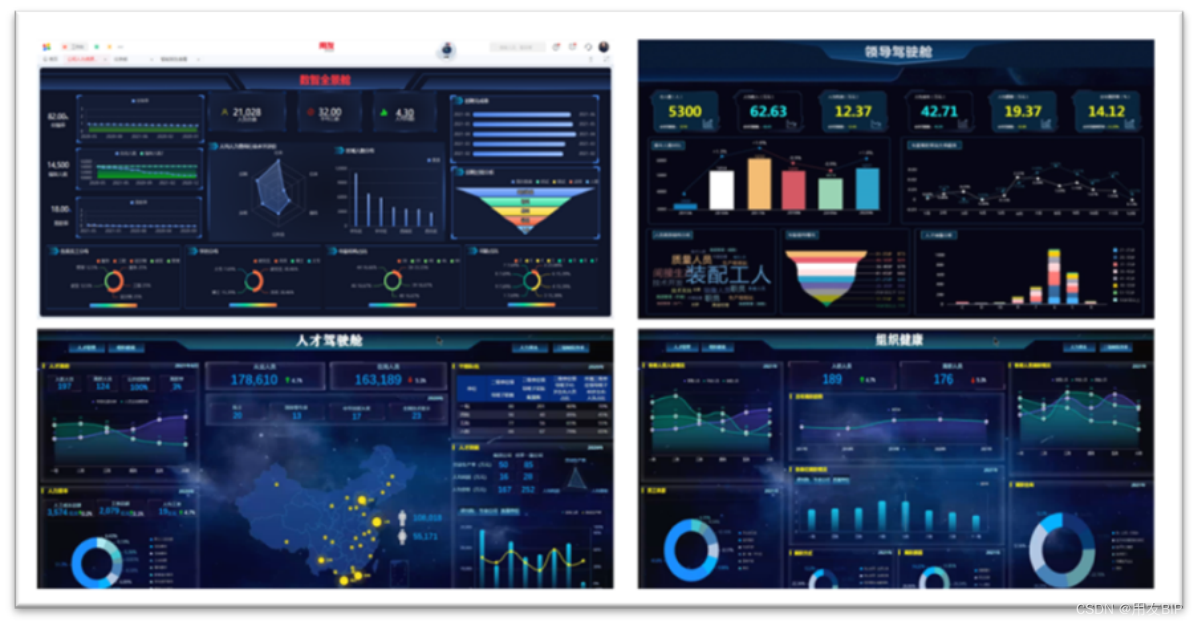In the process of my country's transformation from a big manufacturing country to a strong manufacturing country, the digital and intelligent transformation of the equipment manufacturing industry has become the general trend. In the process of manufacturing companies reshaping business processes and optimizing core value chains, corporate talents must also keep up with the development of the industry. Improving the organizational capabilities of companies is one of the core tasks of their digital and intelligent transformation.
UFIDA Human Resources (DHR) combines the characteristics of equipment manufacturing enterprises, focuses on the fundamental goal of "high-quality development of enterprises and organizational capacity building", takes "empowering employees to activate the organization" as the concept, focuses on "talents lead organizational development, achieves organizational carrying strategies, and management drives employee empowerment", realizes digital transformation of human resource management from four dimensions: talent development, organizational development, human operation, and employee experience, and helps manufacturing companies build digital intelligence in human resource management of "precise talent development, agile organizational transformation, intelligent human operations, and excellent employee experience".
◉ Typical Scenario 1: Digital Smart Recruitment improves blue-collar recruitment efficiency and solves blue-collar labor shortage through multiple channels
There is a large demand for general workers in the equipment manufacturing industry, and it is difficult for the new generation of blue-collar workers to recruit, and the turnover of personnel is fast. Especially around the Spring Festival, there will be a large number of personnel leaving/joining the job. HR needs to handle a large number of transactional tasks such as intermediary docking, personnel screening, information verification, and entry arrangements.

Through the digital intelligence human recruitment platform, multiple recruitment channels can be efficiently developed and managed and integrated to expand the entrance of talent supply: efficient docking with common channels in the manufacturing industry; providing convenient services for fellow villagers; centrally managing labor intermediaries, and analyzing the effectiveness of intermediaries to efficiently allocate resources; providing simple information entry methods at offline job fairs to promote the efficient flow of recruitment processes; supporting channel management, presentation management, and rapid entry of candidate information in school-enterprise cooperation scenarios. Through these methods, the blue-collar recruitment channels are fully opened, which is not only convenient and efficient, but also traceable throughout the process, and continuously optimizes the channel resource mix.
After the resumes are stored, the recruitment customer service robot can intelligently answer candidate inquiries and automatically recommend jobs to candidates; it can recommend batches of resumes and call out robots to invite interviews to improve the efficiency of recruitment circulation and shorten the recruitment cycle; during the onboarding process, the system verifies identity information to avoid employment risks; after blue-collar employees join the job, the employee service robot can answer employee inquiries.
◉ Typical Scenario 2: "Digital Intelligence of Labor Force" Helps Reduce Costs and Increase Efficiency
Equipment manufacturing enterprises are faced with the challenges of insufficient planning, unstable business, mismatched labor force, redundant working hours, and poor employee experience in labor management. The digital and intelligent closed-loop management of labor force provides enterprises with four core modules: labor scheduling, labor management and training, working hours and attendance, and labor insight, to arrange efficient labor resources, standardize and refine operation processes, and empower overall operations.

◉ Typical Scenario 3: Supply Chain of Digital and Intelligent Talents to Crack the Talent Bottleneck
The talent strategy has risen to be an important goal related to the future strategic layout and development of the enterprise. In the process of rapid transformation and upgrading of equipment manufacturing enterprises, it is necessary to build a strong talent supply chain to ensure that suitable people are engaged in suitable positions at suitable times to achieve sustainable development of talents. The talent supply chain should include five important stages: talent planning, talent procurement, talent production, talent supply, and talent quality control.

Through the digital scene, the talent development system and mechanism of "arrival, determination, disk, knowledge, promotion, and promotion" are solidified online to create a sustainable talent supply for enterprises. By decoding the requirements of the strategy for organizational capabilities, positioning the key talent team, and clarifying the qualifications and ability requirements of the key talent team, it not only aligns the company's ability expectations for key talents, but also drives the ability evaluation and improvement of key talents. Under the clear talent standards, the talent inventory process is online, and all kinds of information about talents are collected comprehensively: from the perspectives of knowledge, skills, abilities, behaviors, experiences, etc.; from an individual perspective, a comprehensive and clear talent portrait file can be formed; from an organizational perspective, the current key talent quantity and quality of the enterprise can be clarified, forming an organizational talent map and talent pool. By identifying the gap between the current situation and needs, assist the human resources department in human resource planning, and clarify external talent introduction, internal training and incentive retention measures.
Through the manager's cockpit, the top managers of the enterprise can clearly understand the accounts of key talents, and gain insights into business development trends and talent supply trends through data analysis, providing decision-making support for talent strategies and planning.
The digital level of human resources will hinder the in-depth promotion of business digitalization. More and more equipment manufacturing companies are committed to the digital and intelligent development of human resources in order to reduce costs and increase efficiency, optimize talent supply, and improve the quality of talent decision-making. Undoubtedly, this is a difficult process and faces many challenges; Yonyou Digital Human Resources (DHR) will continue to deepen the human resources business of equipment manufacturing companies, walk with customers, and continue to output and optimize digital human resources solutions with equipment manufacturing characteristics.